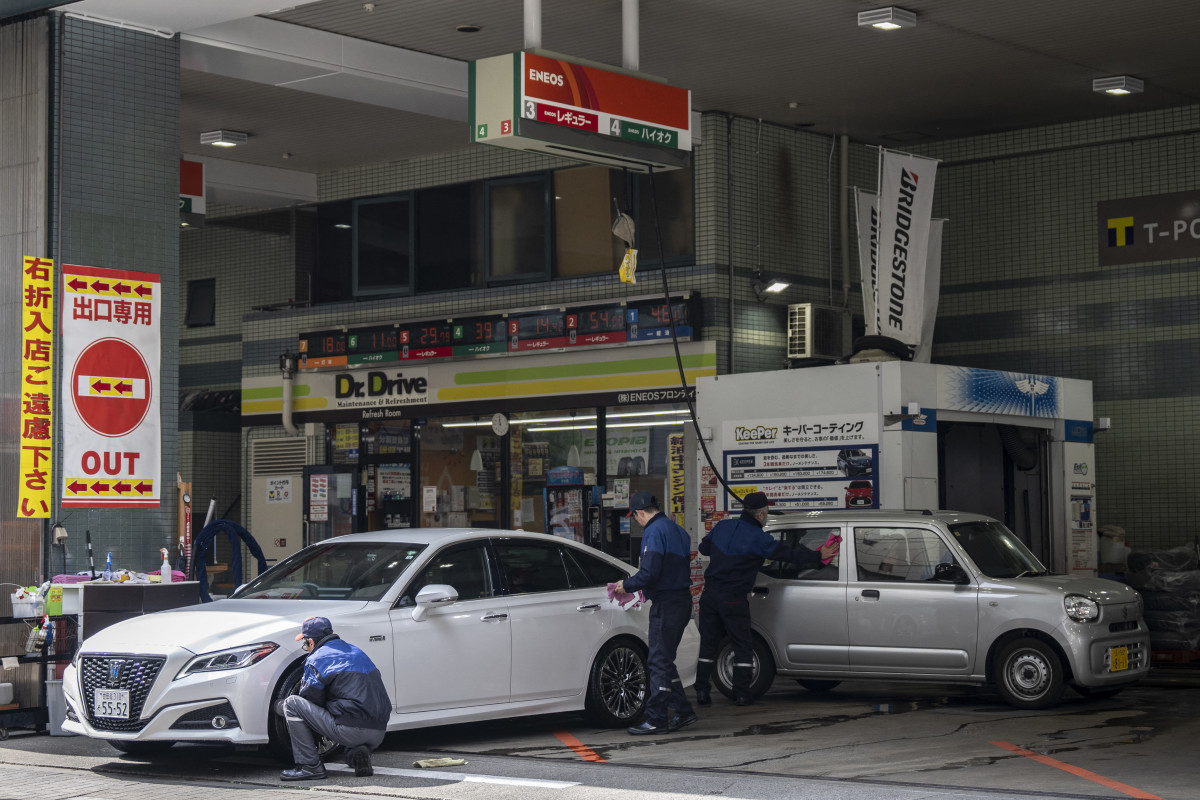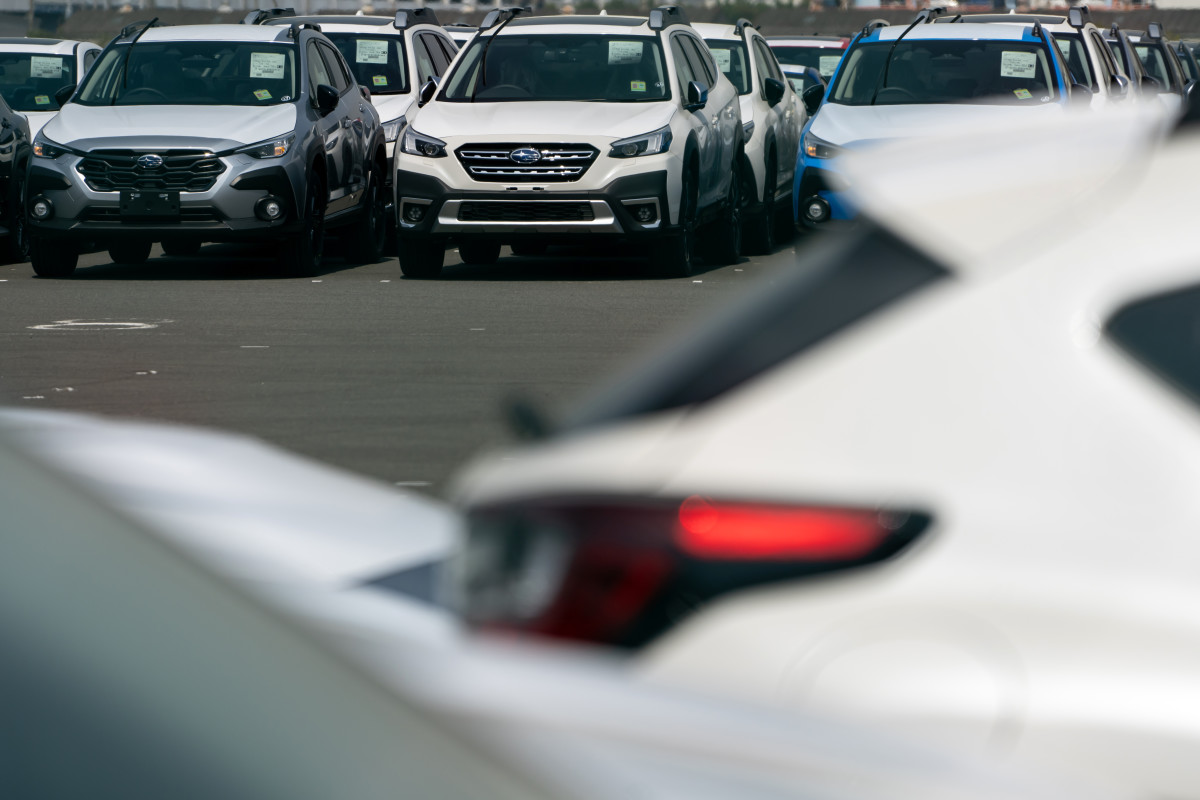Big ‘ol American cars may be a new sight in the Land of the Rising Sun
Before Donald Trump ran for president under his now-infamous “Make America Great Again” tagline, he painted the United States as a shameful country under the Obama administration, as he saw a country that was being lapped by every other country when it came to manufacturing capacity, jobs, and car sales.
“When did we beat Japan at anything?” Trump said during his infamous candidacy speech at the Trump Tower on June 16, 2015. “They send their cars over by the millions, and what do we do? When was the last time you saw a Chevrolet in Tokyo? It doesn’t exist, folks. They beat us all the time.”
Although the speech happened nearly 10 years ago, the implication of the current Trump administration’s tariffs has reignited the same, virtually timeless conversation, especially as reciprocal tariffs on goods from many important regions, including the European Union and Japan, become a huge concern for many Americans.

YUICHI YAMAZAKI/AFP via Getty Images
A common argument that prominent politicians, like U.S. President Donald Trump and his ardent supporters, use to defend these measures is that while Americans purchase certain European and Japanese products, such as cars, they do not buy the same goods at the same rate.
“How many Dodge Rams do you see driving around Europe?” Fox Business host Maria Bartiromo asked after the owner of a Pennsylvania Dodge/Ram dealer expressed concern about the tariffs. “How many Dodge Rams do you see driving around India? I mean, not many, I bet. Why? Because they don’t buy our cars, and that’s what President Trump is trying to change.”
Though many Americans insist that other countries go tit-for-tat on trade, a new Nikkei Asia report suggests that a barrier preventing American cars from traversing the tight streets of Tokyo may be lifted in light of the Trump administration’s tariff policy.

RICHARD A. BROOKS/AFP via Getty Images
Tokyo may use an auto safety rule loosening as a bargaining chip.
According to a new report by Nikkei Asia on April 20, the Japanese government may consider reviewing its auto safety standards in an effort to sweeten up a potential trade deal between the U.S. and the Land of the Rising Sun. The report comes after the Japanese government’s negotiator, Economic and Fiscal Policy Minister Ryosei Akazawa kicked off tariff discussions with his American counterparts, including President Trump in the White House on Wednesday, who expressed interest in eliminating the trade deficit with japan and also complained that complained that American cars are not selling well in Japan.
Preparations are underway for a second round of negotiations, which will include an audience of Trump cabinet members, including U.S. Treasury Secretary Scott Bessent, Commerce Secretary Howard Lutnick, and Trade Representative Jamieson Greer.
Japan is part of a 1958 United Nations agreement designed to create universal automobile certification and testing standards. However, while the U.S. participates in talks regarding the agreement, the barrier preventing American cars from entering Japanese roads is that the U.S. has its own standards and allows automakers to conduct their own safety tests.

Tomohiro Ohsumi/Getty Images
Because of this, imported American cars must receive separate safety certification before they can hit Japanese roads, a process that can take several months—a nontariff barrier that the Office of the U.S. Trade Representative cited in a report issued at the end of March. Japan requires cars to pass tough tests that measure passenger safety in front and side collisions, a challenge that American automakers see as a disadvantage.
Prime Minister Shigeru Ishiba believes there is some wiggle room when it comes to making safety tests easier for American cars, including crash safety. “We have to recognize the difference in traffic conditions,” Ishiba said during an NHK TV program on April 20. The premier also noted that Japan emphasizes pedestrian safety while the U.S. emphasizes vehicle passengers’ protection in crashes. “That said, we want to make sure we aren’t seen as being unfair,” he said on the program.
Final thoughts
Although some car enthusiasts will argue that Japanese car culture has adopted American cars to the same or similar extent that fashionable Japanese youth adopted the traditional “preppy” styles prevalent in American pop culture that come from and depict the 1960s-1980s, it isn’t exactly “mass appeal.”
In a 2018 commentary piece for Mother Jones, political pundit Kevin Drum explained that American cars are incompatible with the Japanese car buyer by design. Besides the aforementioned safety regulations (which were intended to be streamlined in a similar manner if we stayed in the Trans-Pacific Partnership), he boiled it down not to tariffs or non-tariff barriers, but to the notion that Japanese automakers “still build more reliable cars; they build smaller cars; they build right-hand-drive cars; they treat their customers better; and they advertise their wares,” and that “American auto companies don’t do any of this and have never even tried.”
Even if these safety test barriers were lifted, it wouldn’t mean Japanese buyers would immediately come flocking to buy American cars. Smaller, domestically-made Kei and compact cars dominate the roads even if people don’t drive, but approximately a third of the Japanese population lives within the Greater Tokyo area, a metropolis well supported by advanced public transportation that is on-time to the millisecond, a place where a 2-minute delay is considered unacceptable. That’s what the real barrier is: true alternatives to driving.